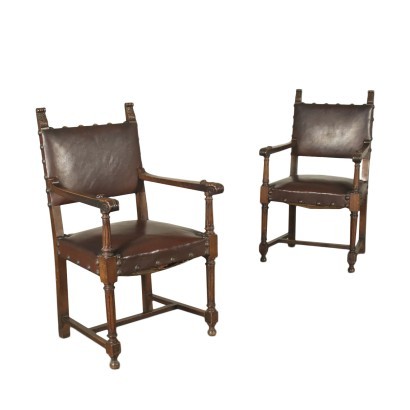Pair of Neo-Renaissance Revival Armchiars Walnut Italy 20th Century
Features
Style: Neo-Renaissance Revival
Age: 20th Century / 1901 - 2000
Origin: Italy
Main essence: Walnut
Material: Padded
Description
Pair of Neo-Renaissance revival armchairs supported by refined and tapered frontal legs that are connected by an H-shaped crossbeam. Padded seat and back; the armrests are supported by refined and tapered pillars.
Product Condition:
Fair condition. Wear consistent with age and use. Any damage or loss is displayed as completely as possible in the pictures.
Dimensions (cm):
Height: 110
Width: 64
Depth: 64
Seat height: 53
Additional Information
Style: Neo-Renaissance Revival
Stylistic revival, from the 1900s, of the forms typical of the Renaissance style.This is a style that re-proposes, looking at the grandeur of the past, decorative motifs and decorations typical of the 1500s.
Mascheroni, cornices, columns carved with herms that make up typical architectural structures of Renaissance palaces, are the elements that characterize the Neo-Renaissance style.
These elements will remain in the production of furniture until the early 1900s, contaminating themselves with floral elements.
Find out more about the Neo-Renaissance with our insights:
A Milanese library between the Belle Epoque and Fascism




























